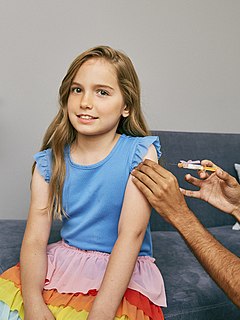 W
WVaccination is the administration of a vaccine to help the immune system develop protection from a disease. Vaccines contain a microorganism or virus in a weakened, live or killed state, or proteins or toxins from the organism. In stimulating the body's adaptive immunity, they help prevent sickness from an infectious disease. When a sufficiently large percentage of a population has been vaccinated, herd immunity results. Herd immunity protects those who may be immunocompromised and cannot get a vaccine because even a weakened version would harm them. The effectiveness of vaccination has been widely studied and verified. Vaccination is the most effective method of preventing infectious diseases; widespread immunity due to vaccination is largely responsible for the worldwide eradication of smallpox and the elimination of diseases such as polio and tetanus from much of the world.
 W
WThis is a list of vaccine-related topics.
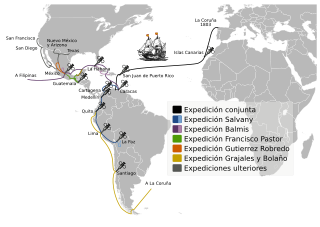 W
WThe Balmis Expedition, officially called the Real Expedición Filantrópica de la Vacuna was a three-year mission, from 1803 to 1806, to Spanish America and Asia led by Dr. Francisco Javier de Balmis with the aim of vaccinating millions against smallpox. Vaccination, a much safer way to prevent smallpox than older methods such as inoculation, had been introduced by the English physician Edward Jenner in 1798.
 W
WVaccinations for cattle involves the process of applying subcutaneous injections of biological microorganisms in a weakened state to help the immune system develop protection by providing active acquirement of immunity to a particular disease. Cattle are bovine livestock and are thus very susceptible to diseases. Vaccinations for cattle are widely used in the livestock industries of the Australian agriculture sector by farmers to prevent harmful and deadly diseases from infecting their livestock, avoiding any economical or biological harm. Farmed livestock industries account for 45% of the gross value of Australian agricultural output, beef cattle being the largest farmed livestock nationally with around 26.2 million head of cattle nationwide. The beef industry within Australia generates a gross value of approximately $8 billion AUD in beef exports and a total gross value of $11.4 billion in farm production (2017–18). Thus, vaccinations play a vital role in protecting, sustaining and growing the beef cattle industry in the Australian agriculture sector.
 W
WCocooning, also known as the Cocoon Strategy, is a vaccination strategy to protect infants and other vulnerable individuals from infectious diseases by vaccinating those in close contact with them. If the people most likely to transmit an infection are immune, their immunity creates a "cocoon" of protection around the newborn.
 W
WPolio epidemics were a concern during the summer months for children globally, with records of polio from the Egyptians and Greeks to the 1950s epidemics. Two U.S. virologists, Jonas Salk of the University of Pittsburgh and Albert B. Sabin of the University of Cincinnati emerged as the most prominent among dozens of American researchers on the quest for a polio vaccine.
 W
WContact immunity is the property of some vaccines, where a vaccinated individual can confer immunity upon unimmunized individuals through contact with bodily fluids or excrement. In other words, if person “A” has been vaccinated for virus X and person “B” has not, person “B” can receive immunity to virus X just by coming into contact with person “A”. The term was coined by Romanian physician Ioan Cantacuzino.
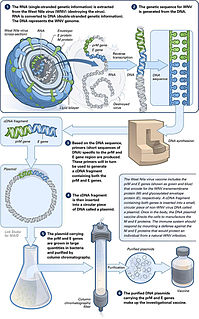 W
WA DNA vaccine is a type of vaccine that transfects a specific antigen DNA-coding sequence onto the cells of an immunized species.
 W
WVaccine development and production is economically complex and prone to market failure. Many of the diseases most demanding a vaccine, including HIV, malaria and tuberculosis, exist principally in poor countries. Pharmaceutical firms and biotechnology companies have little incentive to develop vaccines for these diseases because there is little revenue potential. Even in more affluent countries, financial returns are usually minimal and the financial and other risks are great.
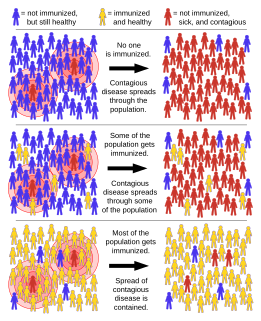 W
WHerd immunity is a form of indirect protection from infectious disease that occurs when a sufficient percentage of a population has become immune to an infection, whether through vaccination or previous infections, thereby reducing the likelihood of infection for individuals who lack immunity. Immune individuals are unlikely to contribute to disease transmission, disrupting chains of infection, which stops or slows the spread of disease. The greater the proportion of immune individuals in a community, the smaller the probability that non-immune individuals will come into contact with an infectious individual.
 W
WImmunization, or immunisation, is the process by which an individual's immune system becomes fortified against an agent.
 W
WA nasal vaccine is a vaccine administered to a person via the nose and does not require a needle. It induces immunity through the inner surface of the nose, a surface that naturally comes in contact with many airborne microbes.
 W
WThe Australian National Immunisation Program Schedule sets out the immunisations Australians are given at different stages in their life. The program aims to reduce the number of preventable disease cases in Australia by increasing national immunisation coverage. The program starts for an Australian when they are born. Vaccinations are given at birth, then again when the baby is 2 months, 4 months, 6 months, 12 months and 18 months. The immunisation schedule continues when the child is 4 years old, and then into adolescent years. The program is not compulsory and parents have the choice if they want their child vaccinated.
 W
WPolio eradication, the permanent global cessation of circulation by the poliovirus and hence elimination of the poliomyelitis (polio) it causes, is the aim of a multinational public health effort begun in 1988, led by the World Health Organization (WHO), the United Nations Children's Fund (UNICEF) and the Rotary Foundation. These organizations, along with the U.S. Centers for Disease Control and Prevention (CDC) and The Gates Foundation, have spearheaded the campaign through the Global Polio Eradication Initiative (GPEI). Successful eradication of infectious diseases has been achieved twice before, with smallpox and bovine rinderpest.
 W
WThe pulse vaccination strategy is a method used to eradicate an epidemic by repeatedly vaccinating a group at risk, over a defined age range, until the spread of the pathogen has been stopped. It is most commonly used during measles and polio epidemics to quickly stop the spread and contain the outbreak.
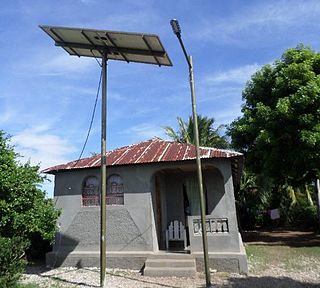 W
WRabies is a viral disease that exists in Haiti and throughout the world. It often causes fatal inflammation of the brain in humans and other mammals, such as dogs and mongooses in Haiti. The term "rabies" is derived from a Latin word that means "to rage"; rabid animals sometimes appear to be angry. Early symptoms can include fever and tingling at the site of exposure, followed by one or more of the following symptoms: violent movements, uncontrolled excitement, fear of water, an inability to move parts of the body, confusion, and loss of consciousness. Once symptoms appear, death is nearly always the outcome. The time period between contracting the disease and showing symptoms is usually one to three months; however, this time period can vary from less than a week to more than a year. The time between contraction and the onset of symptoms is dependent on the distance the virus must travel to reach the central nervous system.
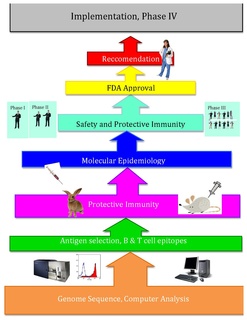 W
WReverse vaccinology is an improvement on vaccinology that employs bioinformatics, pioneered by Rino Rappuoli and first used against Serogroup B meningococcus. Since then, it has been used on several other bacterial vaccines.
 W
WRing vaccination is a strategy to inhibit the spread of a disease by vaccinating only those who are most likely to be infected.
 W
WA vaccination schedule is a series of vaccinations, including the timing of all doses, which may be either recommended or compulsory, depending on the country of residence. A vaccine is an antigenic preparation used to produce active immunity to a disease, in order to prevent or reduce the effects of infection by any natural or "wild" pathogen.
 W
WTargeted immunization strategies are approaches designed to increase the immunization level of populations and decrease the chances of epidemic outbreaks. Though often in regards to use in healthcare practices and the administration of vaccines to prevent biological epidemic outbreaks, these strategies refer in general to immunization schemes in complex networks, biological, social or artificial in nature. Identification of at-risk groups and individuals with higher odds of spreading the disease often plays an important role in these strategies.
 W
WA vaccine trial is a clinical trial that aims at establishing the safety and efficacy of a vaccine prior to it being licensed.
 W
WVaccination in Brazil includes all the practice and social issues related to vaccines in Brazil.
 W
WVaccination of dogs is the practice of animal vaccination applied to dogs. Programs in this field have contributed both to the health of dogs and to the public health. In countries where routine rabies vaccination of dogs is practiced, for example, rabies in humans is reduced to a very rare event.
 W
WA vaccine is a biological preparation that provides active acquired immunity to a particular infectious disease. A vaccine typically contains an agent that resembles a disease-causing microorganism and is often made from weakened or killed forms of the microbe, its toxins, or one of its surface proteins. The agent stimulates the body's immune system to recognize the agent as a threat, destroy it, and to further recognize and destroy any of the microorganisms associated with that agent that it may encounter in the future. Vaccines can be prophylactic, or therapeutic.
 W
WVaccine efficacy is the percentage reduction of disease in a vaccinated group of people compared to an unvaccinated group, using the most favorable conditions. Vaccine efficacy was designed and calculated by Greenwood and Yule in 1915 for the cholera and typhoid vaccines. It is best measured using double-blind, randomized, clinical controlled trials, such that it is studied under “best case scenarios.” Vaccine effectiveness differs from vaccine efficacy in that vaccine effectiveness shows how well a vaccine works when they are always used and in a bigger population whereas vaccine efficacy shows how well a vaccine works in certain, often controlled, conditions. Vaccine efficacy studies are used to measure several possible outcomes such as disease attack rates, hospitalizations, medical visits, and costs.
 W
WVaccine-naive is a lack of immunity, or immunologic memory, to a disease because the person has not been vaccinated. There are a variety of reasons why a person may not have received a vaccination, including contraindications due to preexisting medical conditions, lack of resources, previous vaccination failure, religious beliefs, personal beliefs, fear of side-effects, phobias to needles, lack of information, vaccine shortages, physician knowledge and beliefs, social pressure, and natural resistance.
 W
WA virosome is a drug or vaccine delivery mechanism consisting of unilamellar phospholipid membrane vesicle incorporating virus derived proteins to allow the virosomes to fuse with target cells. Viruses are infectious agents that can replicate in their host organism, however virosomes do not replicate. The properties that virosomes share with viruses are based on their structure; virosomes are essentially safely modified viral envelopes that contain the phospholipid membrane and surface glycoproteins. As a drug or vaccine delivery mechanism they are biologically compatible with many host organisms and are also biodegradable. The use of reconstituted virally derived proteins in the formation of the virosome allows for the utilization of what would otherwise be the immunogenic properties of a live-attenuated virus, but is instead a safely killed virus. A safely killed virus can serve as a promising vector because it won't cause infection and the viral structure allows the virosome to recognize specific components of its target cells.
 W
WWI-38 is a diploid human cell line composed of fibroblasts derived from lung tissue of a 3-month-gestation female fetus. The fetus came from the elective abortion of a Swedish woman in 1962, and was used without her knowledge or permission. The cell line was isolated by Leonard Hayflick the same year, and has been used extensively in scientific research, with applications ranging from developing important theories in molecular biology and aging to the production of most human virus vaccines. The contributions from this cell line towards human virus vaccine production have been credited with avoiding disease in, or saving the lives of, billions of people.
 W
WWorld Immunization Week is a global public health campaign to raise awareness and increase rates of immunization against vaccine-preventable diseases around the world. It takes place each year during last week of April.